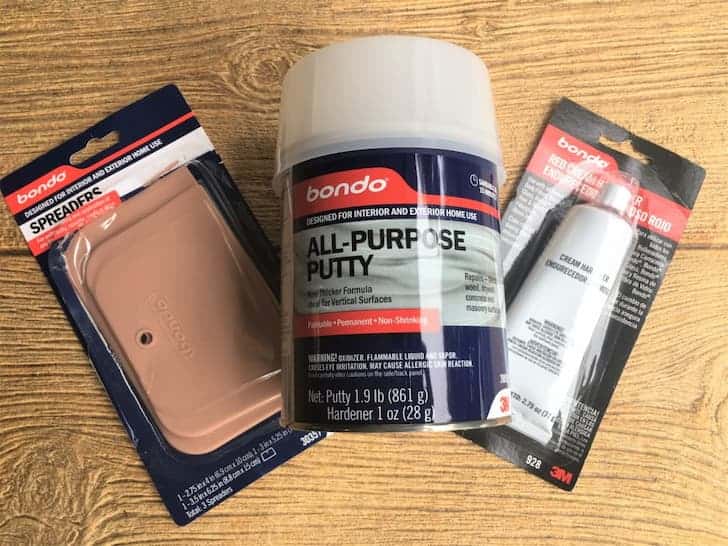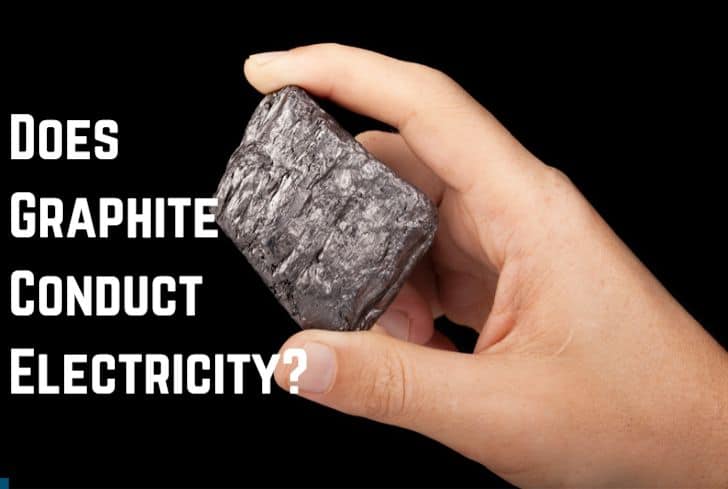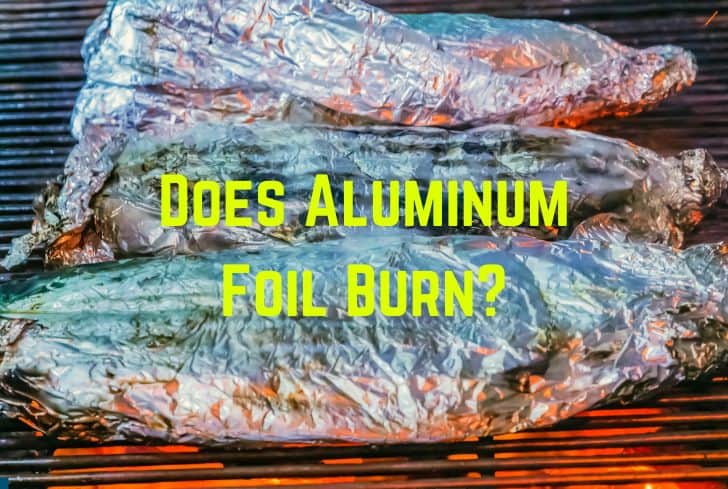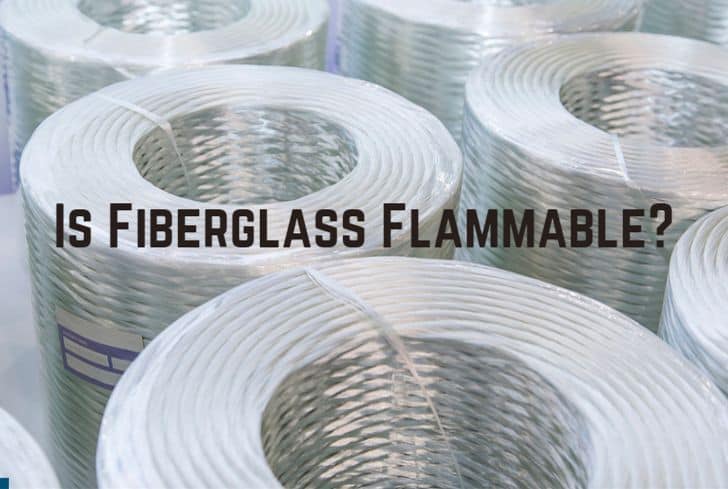Is Bondo Waterproof? (Answered)

Bondo is a type of auto-body filler that is used to repair small scratches and dents in a car’s body. It is a two-part polyester resin that is mixed with a hardener to create a putty-like substance; this can be applied over a car surface, dried, and then painted on.
Besides automobile repair, Bondo is also used in household repairs and marine applications. Have you ever wondered if Bondo is waterproof? In this article, we are going to discuss just that. We will talk about its composition, water resistance properties, and uses.
What is Bondo?
Bondo is a polyester putty that was originally designed to repair automobiles. Because of its versatility, it has been adopted in a wide range of applications, from household repairs to marine works.
Bondo is a two-part polyester resin that is mixed with a hardener. Their mixture creates a putty-like substance that can be applied to damaged areas. After being applied, Bondo is allowed to dry and harden, after which it can be sanded down to create a smooth surface.
Most Bondo products are quite water-resistant, and after smoothening, they can also be painted with waterproof sealants to provide further protection. They are easy to work and adhere well to both metal and non-metal surfaces.
The term “Bondo” is actually trademarked by a company called 3M, but the popularity of the product has turned it into a general name for any automotive repair putty. Car enthusiasts use Bondo to repair minor damages, such as hail damage or door dings.
Before the mid-20th century, people often used body solder to repair imperfections (prior to painting) in both new cars and old car repairs. This was done using a flame and wooden paddles covered in motor oil, which prevented the half-molten lead from sticking.
However, after the Second World War, automobile panels became thinner and larger. Their greater susceptibility to warping made it impossible to use hot solder. Around this time, the earliest plastic solder was invented, which gave a DIY solution to fix panel damage.
This plastic solder was one-part and epoxy-based, which was dried out by gas. They initially performed worse than solder, but with time, they improved. Then, in 1955, an automobile shop owner Robert Merton Spink created Bondo. It was acquired by 3M in 2007.
Is Bondo Waterproof?
Yes, all Bondo products are quite water-resistant, but only a few of them are completely waterproof. Most Bondo products will withstand some level of water exposure but excessive amounts will damage it; it can also damage the underlying surface.
First, let us first understand the difference between two commonly confused terms: waterproof and water resistant.
Waterproof means that the material is completely impervious to water. It can be fully submerged without getting damaged. For example, a waterproof raincoat may keep you dry even in heavy rain.
Water-resistant, on the other hand, means that the material can withstand some degree of exposure to water, but it is not completely impervious to it. For example, a water-resistant watch might resist some gentle splashing, but it will get damaged when fully submerged in water.
Bondo is a polyester putty that is water-resistant. It will be able to withstand some level of water exposure and will not get washed away. However, it will still absorb water, which can damage not only the putty but also the underlying surface (of your car, bathtub, etc.)
However, there is one line of Bondo products that is much more resistant to water. Bondo Fiberglass Resins and Repair Kits claim to be 100 percent waterproof. They do not shrink and therefore serve as excellent sealers.
Moreover, the Fiberglass Resin can be sanded after just two hours. It is compatible with all paints and also provides a strong, long-lasting bond.
However, you must keep in mind that Bondo Fiberglass Resins have a much bigger margin for error; their repairs are more difficult to cover up easily. Moreover, even though it claims to be waterproof, it can not fully shield against water.
So, make sure you are using the right type of Bondo product for your need. Otherwise, you might be forced to sand away the extra amount of fiberglass resin, which can also ruin your car’s surface.
Check out this video by Eastwood Company to see how body fillers test against water.
Why Doesn’t Bondo Get Wet Easily?
Bondo does not get wet easily because of its composition. It is specially designed to provide resistance against water, and some Bondo products are also completely waterproof.
Most Bondo products are made up of aluminum and polyester. These two agents are quite good at resisting water. Plastic resin is another important constituent, which has excellent water-resistance properties.
The two-part polyester resin of Bondo is mixed with a hardener. It causes a chemical reaction that creates a hardened, plastic-like substance. This material is non-porous and is therefore quite water-resistant.
Besides being non-porous, Bondo also contains a number of additives that enhance its water resistance. For example, it has talc or calcium carbonate, which helps to reduce the amount of space between the resin molecules. This makes it more difficult for water to penetrate.
Usually, waterproof paint or a sealant is also applied on top of Bondo when it is used for automotive repairs. This paint/sealant provides further protection, acting as a barrier to prevent water from penetrating. Otherwise, Bondo and the underlying surface can get damaged.
How to Prevent Bondo From Getting Wet?
Although Bondo is generally resistant to water, it cannot withstand prolonged or excessive exposure to water. So, here are a few steps you can take to prevent Bondo from getting wet:
- Let the Bondo properly: After applying the Bondo to the surface you’re repairing, it’s important to let it cure fully. Make sure you follow the manufacturer’s instructions to see how much time is required. This will ensure that the Bondo is as hard and durable as possible, which will make it more resistant to water damage.
- Sand and smooth the Bondo: After the Bondo has fully cured, you should use sandpaper to smooth out any rough or uneven areas. This will create a smooth surface, which is less likely to trap water or moisture. It will also make it easier to paint.
- Paint over the Bondo: Once the Bondo has been sanded and smoothed, it’s usually recommended to paint over it with waterproof paint or sealant. This will improve the water-resistance of Bondo, creating a protective barrier. It will prevent water from penetrating the surface and causing damage.
- Seal the edges: If you are using Bondo to repair an area near the edge, it’s important to seal the area with waterproof sealant. This will help to prevent water from seeping in through any small gaps or cracks.
- Avoid exposing the repair to water: As much as possible, try to avoid exposing the Bondo repair to water or moisture. If you are using it for automotive repair, then try parking your car in a covered area and avoid driving through deep puddles. Take all steps to keep your Bondo repaired area dry.
Can You Paint Over Bondo?
Yes, you can paint over Bondo. However, you first need to apply a primer over it. The primer will act as a base coat, over which you can paint; otherwise, the Bondo will simply absorb the paint.
After applying Bondo to an area, let it dry and harden. After that, use fine-grit sandpaper to smooth any rough spots. Then make sure that the surface is completely clean. Now apply automotive primer on your car’s surface.
If you don’t use a primer, the Bondo will simply absorb the paint; you definitely don’t want this to happen, especially since car paint is quite costly. When you use a primer in sufficient amounts, the Bondo will absorb it, and it will act as an excellent base coat.
Then you can apply the paint of your choice on top of the primer. If you are using resin-based Bondo, then make sure you apply the lightest layer of primer. While resin-based Bondo is waterproof (and therefore won’t absorb the paint), it is not a great surface to paint on.
Therefore, irrespective of the type of Bondo you are using, a layer of primer will give you the perfect surface on which you can paint.
Common Uses of Bondo
Bondo can be used in the following applications:
- Automobile repairs: Bondo is primarily used to fix small dents, dings, and scratches in a car’s body.
- Household repairs: It can help fix damaged wood of door frames and furniture. It can also repair holes in ceilings and walls.
- Marine applications: Bondo can be used to repair fiberglass surfaces on boats and other marine vehicles. Cracks or holes in the hull can also be fixed using Bondo. Its waterproof and lightweight nature makes it ideal for marine applications.
- Art & Crafts: It is used to create molds and castings for art and sculpture projects. Damaged sculptures can also be repaired using Bondo.
Conclusion
In this article, we have discussed whether Bondo is waterproof or not. Most Bondo products are water-resistant, and a few of these (the Bondo Fiberglass Resins) are completely waterproof. They can also be painted over with waterproof sealant to improve their water resistance. We looked at the composition of Bondo and also talked about its common uses.






